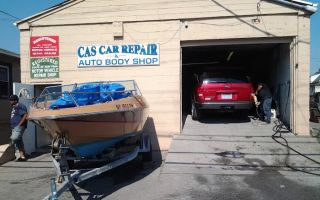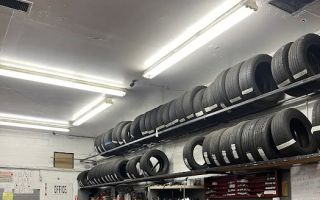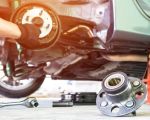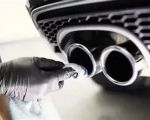What to Do If Your Car Is Stuck in a Ditch
Getting your car stuck in a ditch can be an incredibly stressful situation, especially if you're far from help. Whether it's a muddy roadside, a snowbank, or a deep puddle that has swallowed your tires, knowing what to do can save you time, money, and a lot of headaches. Here's a step-by-step guide on how to handle this tricky scenario.

Handley's Auto Repair
3925 E Brundage Ln, Bakersfield, CA 93307, USA
1. Assess the Situation
First and foremost, stay calm. Panicking will only make the situation more stressful. Take a moment to assess the situation and check for any potential hazards. Are you in a remote area with no cell service? Is the ditch steep enough to make recovery difficult? Understanding the risks will help you determine your next steps.
Make sure to turn on your hazard lights to alert other drivers to your location. If it's safe to do so, check for oncoming traffic or other potential hazards like trees, rocks, or flooding nearby. This will help you determine the best way to approach getting out of the ditch.
2. Try to Free the Vehicle Yourself
If the car is stuck in a shallow ditch or only slightly off the road, you might be able to free it yourself. Here are some techniques to try:
- Rock the Car: Gently press the gas pedal, rocking your car back and forth to loosen it. Be careful not to spin your tires too aggressively, as this could cause more damage to your vehicle or create a deeper rut.
- Use Traction Aids: If you have something like a mat, towel, or even a rubber floor mat, place it in front of the tires to give them more grip. This can help your tires gain the traction they need to pull the car out.
- Clear the Area: If the car is stuck in mud or snow, clear away any debris or loose dirt around the tires to give them more room to move. You can use a shovel, stick, or even your hands to clear the area if needed.
3. Use a Tow Strap or Rope
If you have another vehicle available, you can attempt to tow your car out using a tow strap or rope. This is where you need to be cautious, as improper towing can cause further damage. Make sure both vehicles are in neutral and make sure the tow rope is attached securely to the tow hook or frame of both vehicles.
It's best to use a slow and steady motion to avoid jerking your car, which could cause damage. If you're unsure how to do this, call a professional towing service to avoid causing harm to your car or another vehicle.
4. When to Call a Tow Truck
If the situation feels too difficult or unsafe to handle on your own, don't hesitate to call a professional towing service. Many towing companies, like Rescue & Towing, offer quick and reliable roadside assistance to help you get out of a ditch or other sticky situations. A professional will have the right tools and experience to safely recover your vehicle without causing damage.
5. Preventing Future Incidents
Once you've successfully recovered your vehicle, it's time to think about how to prevent future incidents. Here are some things to keep in mind:
- Avoid Driving in Hazardous Conditions: Before heading out, check the weather and road conditions. Avoid driving in snowy, muddy, or flooded areas where your vehicle is more likely to get stuck.
- Know Your Vehicle's Capabilities: Understanding your car's limits can help you avoid situations where your vehicle might get stuck. For example, if you have a front-wheel-drive car, it's more likely to get stuck in mud or snow compared to a four-wheel-drive vehicle.
- Carry Roadside Assistance Tools: Consider carrying a roadside emergency kit, which may include items like a tow rope, shovel, traction mats, and even a portable air compressor. These tools can come in handy if you get stuck in the future.
Getting stuck in a ditch doesn't have to ruin your day if you're prepared. By staying calm, trying the right techniques, and knowing when to call for help, you can get your car back on the road quickly and safely.




























